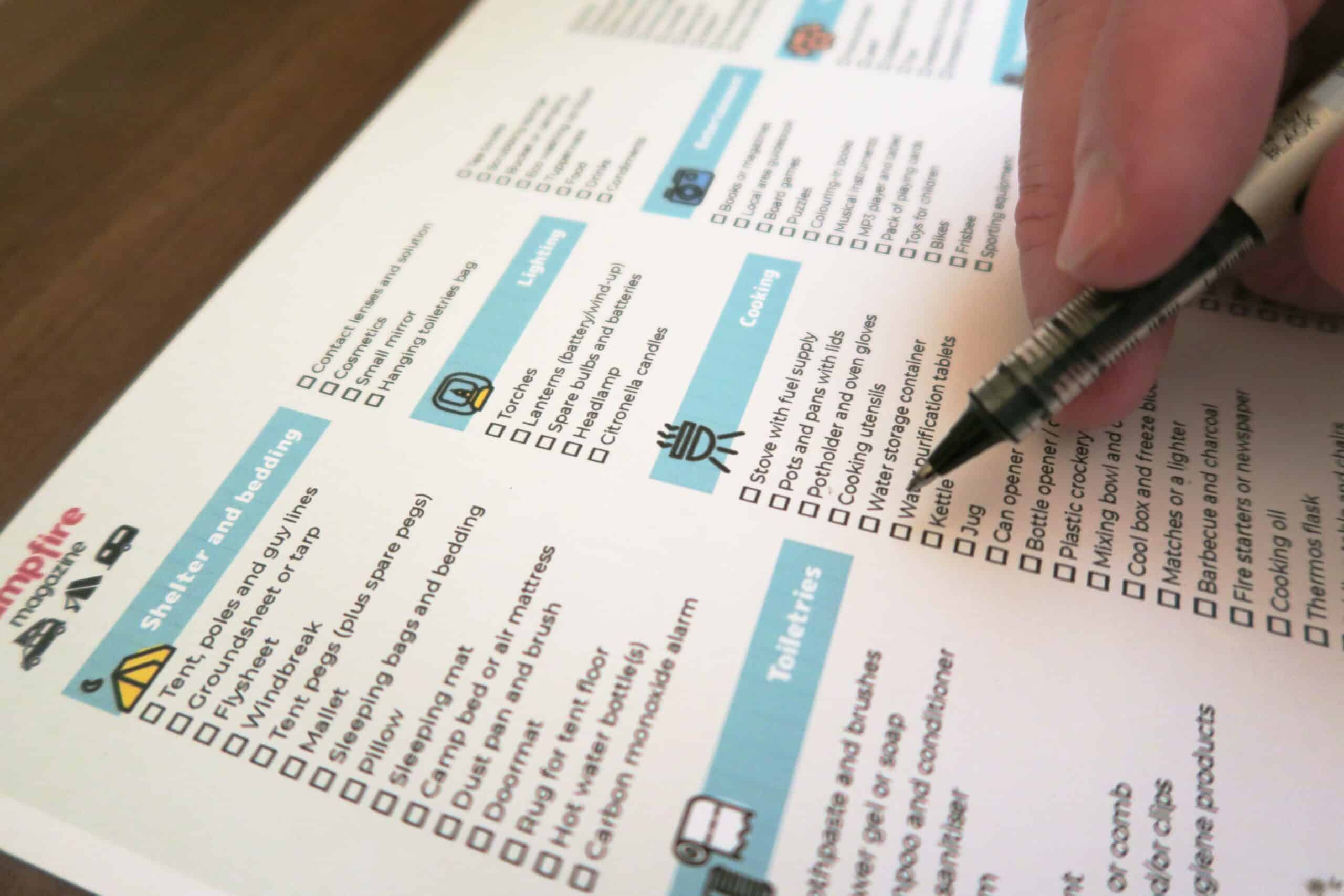Camping and hiking enthusiasts, particularly those who enjoy roughing it a bit more than most, have memories of the early air mattresses that revolutionized comfort levels when it came to sleeping on the ground under the stars. But later, things got even better, and a self-inflating mattress made an appearance, making the setup much quicker without compromising quality.

Air mattresses are generally bulkier and take longer to inflate with air and deflate than self-inflating mattresses. Air mattresses are commonly used where a temporary bed is required. Thinner self-inflating foam-filled mattresses are ideal for hiking and camping applications.
Innovative advancements have been made in the past few years in terms of outdoor sleeping solutions. The two most popular bed solutions for home and outdoor use are conventional air mattresses that need to be inflated before use, and more recently, self-inflating mattresses have added an element of convenience to the experience.
How Do Air And Self Inflating Mattresses Work?
Both traditional air mattresses and self-inflating mattresses require air to inflate an outer bag. Once inflated, a seal is closed, which traps the air inside to create a comfortable sleeping base.
How Does An Air Mattress Work?
Air mattresses are usually made from polyvinyl chloride (PVC) or, in the case of more expensive types, textile-reinforced urethane plastic and or rubber materials.
Air mattresses must be filled with air before use as they do not contain any padding.
Air mattresses are inflated by blowing air directly into the bed with your lungs (this could take quite a long time depending on the size of the mattress and "blower"). The preferred option is using a manual or electrically powered air pump.
The firmness of the mattress can be adjusted by the volume of air being pumped into it. An air mattress could burst if too much air is pumped into its sealed system. Overinflating an air mattress puts pressure on the seams, which can cause the unit to rupture.
How Does A Self-Inflating Mattress Work?
Self-inflating mattresses take the hassle out of blowing up a mattress before it can be used. This type of mattress works on the same principle as an air mattress. They also require air to be trapped within an outer lining to form a bag or mattress on which you sleep.
However, the process of inflating the mattress has been innovatively simplified. This has been done by filling the air-tight cell with open-cell foam. The foam material has the unique property of being able to be compressed for long periods without forming a memory. The material will immediately spring back to its original form when needed.
When inflating a self-inflating mattress, one can simply unroll it in its deflated form onto a flat surface and open the air inlet valve. The mattress will immediately begin to inflate without any further fuss.
Opening the valve will allow air to enter the mattress and the compressed foam inside the mattress starts expanding. Once the expansion process has stopped, the mattress is fully inflated, and the valve can be closed. The mattress is then ready for use. The process couldn't be any more straightforward, and you don't need a pump.

Are Self-Inflating Or Air Mattresses More Comfortable?
Self-inflating mattresses generally offer a firmer sleeping surface than air mattresses.
The thickness and quality of the mattress you select will have a direct bearing on the comfort of the mattress. Most self-inflating air mattresses are very comfortable.
Self-inflating air mattresses are made primarily for the hiking and camping market, so a balance between size, weight, and sleep comfort had to be found. If you're going to be hiking a long distance, you'd undoubtedly be quite happy to sacrifice a bit of sleeping comfort rather than carrying a heavy mattress around in your pack all day.
Outdoors mattresses are, of course, the primary layer between you and the ground when sleeping outside. In cold climates, self-inflating mattresses' foam offers good insulation, making them well suited to the purpose.
The thinner the mattress, the firmer it will be to protect you from the ground surface below.
Can You Sleep On An Air Mattress Permanently?
Sleeping on the average, low to medium-priced air mattress permanently is not advised but can be done if necessary. There are a few potential drawbacks if you are thinking of doing this.
Keep in mind that most air mattresses are designed as a temporary bedding solution. Permanent air mattresses are available, but they are designed specifically for home use. Air mattresses for permanent household use can cost around $200, some even more. This type of permanent air mattress is not well suited for outdoor camping use.
The main drawback of using an air mattress as a permanent bed is that one tiny air leak due to a puncture or leaking seam will deflate your bed. Therefore, the quality of the air mattress that you choose plays a vital part in determining your bed's longevity.
The following also needs to be considered when wanting to use an air mattress as a permanent bed:
Lumbar support:
In terms of lumbar support, air mattresses do not offer the same level of support as conventional mattresses. Air mattresses tend to be pretty firm and unforgiving when lying on them.
Over time you may develop aches and pains resulting from poor sleeping posture if you sleep on an air mattress for extended periods. The reason for this is because your torso, which is the heaviest part of your body, will invariably sink deeper into the mattress than your head and limbs.
Stability
Taller or thicker air mattresses will be more prone to the sagging sensation. The outer edges of some may even lift off the floor when you lay down on the mattress.
Thinner air mattresses also have some drawbacks. Because they are thin, they need to be pumped up quite firmly to avoid you feeling the floor when turning over in bed.
Fully PVC-type air mattresses tend to be quite slippery, especially when covered by a sheet. There is, therefore, a possibility that you could you may slip off the mattress when least expecting it.
When using a double bed air mattress, movements made by your partner are transferred to your side of the mattress. This movement can cause sleep disturbance.
Temperature comfort
Most air mattresses are made from a PVC material that does not effectively regulate temperature or wick moisture. In hot climates, you will sweat more as your body tries to regulate your body temperature. Because it is PVC, the sweat cannot dissipate, which can be uncomfortable.
The opposite is also true in cold climates. PVC does not retain heat well. An air mattress is, in effect, a bubble of cold air below your body. The cold will be transferred to you from underneath, resulting in you feeling cold.
Can You Sleep On An Self-Inflating Mattress Permanently?
Self-inflating mattresses are pretty thin and only recommended for short-term use while camping. In addition, they are not made for everyday use, and durability would be an issue if they were used continuously.
Our article about best camping mattress for couples is here and our top pick is below
OUR TOP PICK
This is an extremely comfortable mattress that boasts a six airbag design. These airbags can be individually inflated so you can create a sleeping space that is suited to your needs. Perhaps you need greater support in the lower back or around the neck; anything is possible with this design.
Alongside this full-body support, you will be getting a camping mattress that is super-soft on the skin. This is thanks to the environmentally-friendly PVC material that is a dream to sleep on. Furthermore, this material is incredibly durable and therefore, ideal for outdoor use.
The mattress supports up to 270kg in weight and will sleep 2-3 people, depending on size. It may be ideal for two parents and a child to share.
One of the most impressive things about this mattress is that it is specifically designed for winter use. It features a cold-resistant material that will keep you warm even when the temperature drops.
It is quick to inflate and will also deflate at an impressive rate meaning that, once the night is over, you can pack up your gear and move on to the next location without having to wait around.
Are Self Inflating Mattresses Better Than Air Mattresses?
Self-inflating mattresses and air mattresses are each designed with specific uses in mind.
Both are designed as temporary sleeping mattresses but let us explore their pros and cons for camping and hiking.
Self Inflating Mattresses | Air Mattresses | ||
Pros | Cons | Pros | Cons |
Compact when rolled up | Harder Sleeping surface | Comfortable | Requires pumping to inflate |
Lightweight | Larger mattresses can be bulky | Higher off the ground | Susceptible to punctures (PVC) |
Easy to inflate | Tend to be smaller than air mattresses | Heavy – Size-dependent | |
Easy to deflate | Non-biodegradable | Cumbersome to pack up | |
Good insulation properties | Low to the ground | Poor insulation properties | |
No air pump is required. | Non-biodegradable | ||
Tough groundsheet layer | |||
It offers padding even when deflated. | |||
From the table, self-inflating mattresses have the edge over the traditional air mattress for outdoor use, specifically for hiking and basic camping.
Convenience is the key when out hiking. When constantly on the move, instead of having a permanent camping spot, your focus is on enjoying the outdoors and safely reaching your next camp. Carrying a heavy mattress around and then pumping and deflating your mattress each time you want to use it is not a great use of time.
If you are car-camping in an area where basic amenities such as electricity are available, and you will spend most of your time in the camp, either an air mattress or a self-inflating mattress will be perfect since you have time on your side. Since you won't have to carry the mattress, you can select a larger air mattress for added comfort.
How To Deflate An Air Mattress And A Self Inflating Mattress
Both types of mattresses have air inside that has either been pumped into the mattress or sucked into the mattress. The method to deflate and store the mattresses is the same in both types.
Remove the air from the mattresses so that they can be stored compactly in the following way:
Lay the inflated mattress flat on the floor. (Check for and remove any sharp objects from under the mattress)
Open the air release valve. (Some models may only have one valve to inflate and deflate)
Allow the air to escape from the mattress until the air stops flowing.
Now take hold of the end of the mattress, located furthest from the valve, and slowly start rolling it along the entire width towards the valve. (remaining air should be escaping from the valve as you roll up the mattress)
Once you reach the valve, press out the remaining air and close the valve.
Now unroll the mattress again and lay it out flat, ready for final folding or rolling up. (Without allowing new air to get into the mattress).
Now proceed to fold or roll up the mattress as required to fit back into its carry bag.
During the final folding process, additional trapped air may have collected and must be released from the valve. Be careful not to release the mattress when the valve is open as new air will be drawn in, and it may begin to straighten again. Close the valve once the last air has been released.
Most new mattresses are fitted with one-way valves, making it easy to release the air without worrying about air entering the mattress again.
Are Air And Self Inflating Mattresses Usable On Camp Beds?
Both air-type mattresses and self-inflating mattresses can be used on camping beds, provided the following guidelines are considered.
- Ensure that the mattress is the correct size for the camping bed.
- Check the camping bed to ensure no adjustment knobs, springs, etc., don't protrude from the bed that could damage the mattress.
- When using an air mattress on a camping bed, it is best to use a thin air mattress to keep the center of gravity close to the camping bed. The last thing you want is to fall off a high, poorly fitting mattress.
Air mattresses and self-inflating mattresses are a welcome addition to any camping bed. Combining either of these types of mattresses with a camping bed will make a comfortable bed from which to enjoy the outdoors.
Can You Use An Air And Self Inflating Mattress In A Hammock?
Hammocks are pretty unstable to get in and out of, so the thinner and more flexible the mattress, the better.
Adding an inch or two of padding to the inside of a hammock will make it one cozy space. Adding more height than that would make it downright dangerous. As such, the self-inflating mattress is better suited to use in a hammock.
A self-inflating mattress would take the shape of the hammock better than an air mattress. Self-inflating mattresses are thinner and will not upset the center of gravity, leading to greater stability in the hammock. Being non-slip also makes a self-inflating mattress the better choice for hammock campers.
Conclusion
When comparing air mattresses to self-inflating mattresses, we're comparing old-school reliability to modern high-tech innovation. Both do the same job and provide campers with a soft space to sleep on when camping or hiking. The main difference is convenience.
Self-inflating mattresses are compact, quick to set up, and lightweight. Air mattresses are well suited to applications such as temporary mattresses for visitors at home or when car camping.


